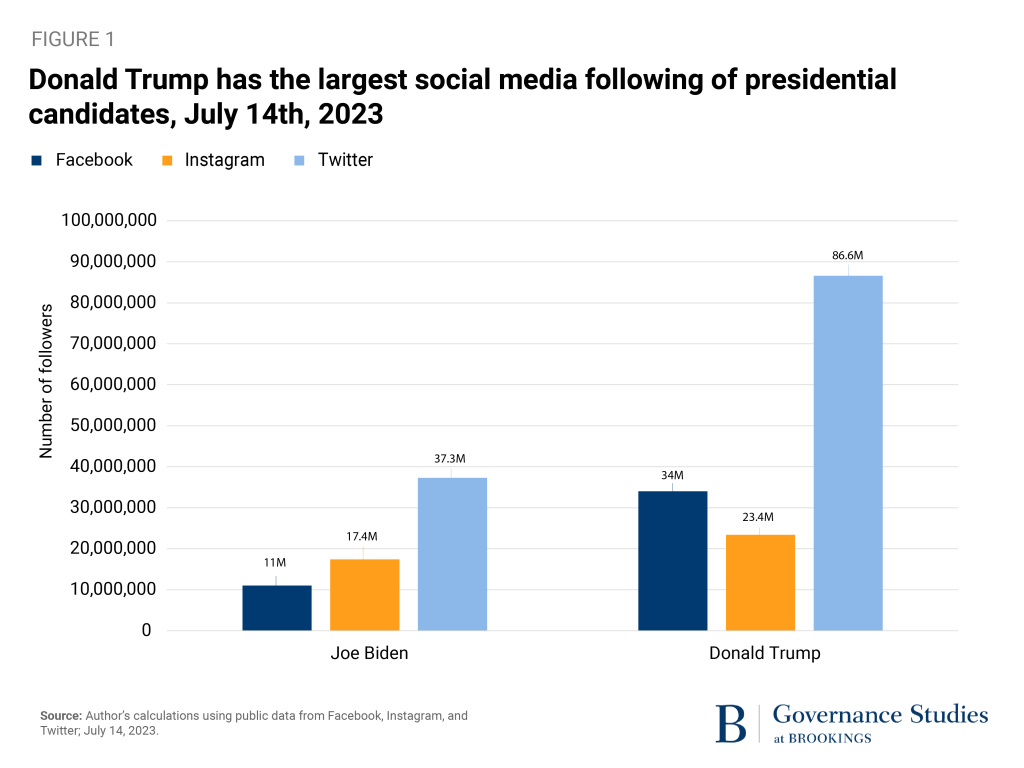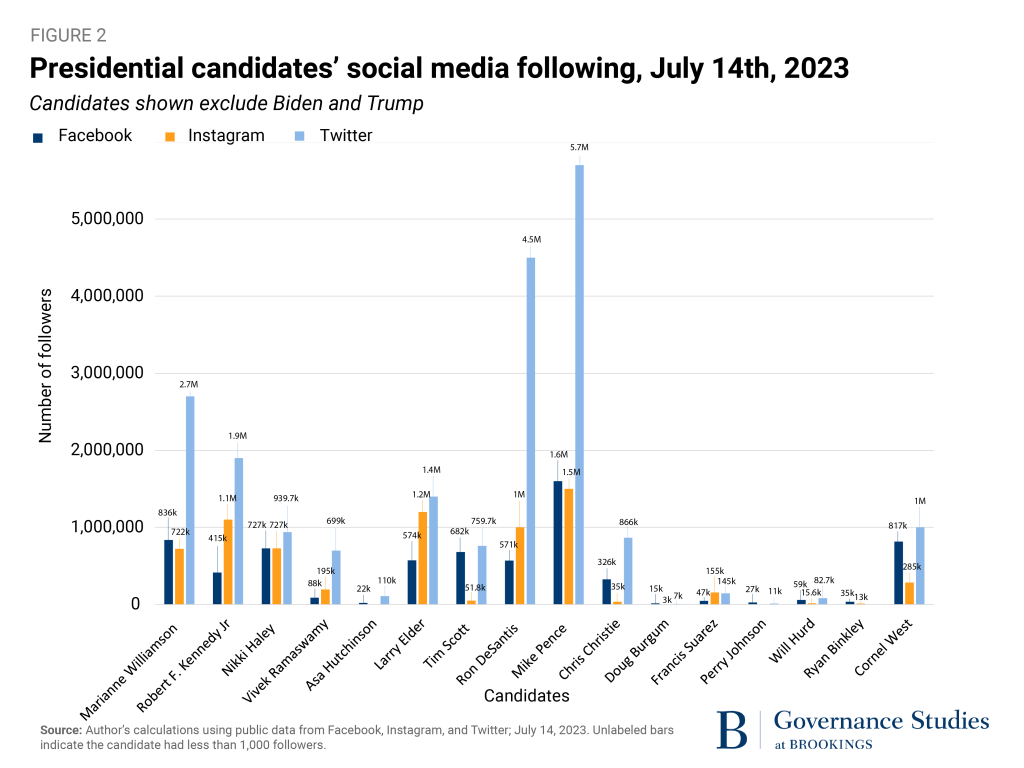Welcome to the invisible primary in American presidential politics. It starts somewhere in the winter of the year before the presidential election year and ends in the following winter when people actually start voting in primaries. The phrase was coined by the late journalist Arthur T. Hadley who defined this period of time as about “that unnoticed maneuvering… what a candidate does before the primaries to assure himself of victory.” 1
Starting today Brookings will begin tracking the invisible primary of 2023. We will stick to things we can measure, and we will explain, along the way, the nuances of the data and what we think it means. We’ll track some of the things that Hadley tracked such as the amount of money candidates raised as well as their number of media mentions. In addition, we will track engagement on social media sites, endorsements by political leaders and by important interest groups, national polling and eventually activity and polling in the key early primary states. Hadley included some more subjective qualities in his story of the invisible primary and as we unveil our metrics, we’ll invite others to comment on how they relate to the qualities that go into the making of a president.
Our first look today will be at social media followings. As Figure 1 shows, President Biden and former President Trump have, by far and away, the strongest presence on social media according to their social media following. This is to be expected since the presidency alone (past and present) would give them enormous visibility. Also, it is not surprising that Trump, having worked social media assiduously since his emergence on the national scene in 2015, has many more followers than Biden.

While the first figure confirms what we know about the relative presence on social media of the two frontrunners, the next figure provides us with some food for thought about the rest of the field.

The first thing to notice is that former Vice President Mike Pence has the most followers on all three social media platforms, exceeding even Florida Gov. Ron DeSantis. What’s interesting about this is that DeSantis is consistently in second place in polling and is covered constantly, while Pence is consistently a distant third place and has had trouble attracting financial support and media coverage.
The social media rankings, however, may be meaningless. Pence’s strength on social media may simply be the result of his stint as Vice President rather than underlying political support. Or it may simply reflect the fact that Pence has what Hadley called “a constituency,” in his case the evangelical community which follows him and may eventually turn out for him in the all-important Iowa caucuses.
The second noticeable fact about this chart is that after Pence and DeSantis the candidates with the most followers are media celebrities like Marianne Williamson, Robert F. Kennedy, Jr., and Larry Elder who are inexperienced in elective politics and unlikely to get the nod from primary voters but who work hard at building up their social media presence because it helps them attract attention and make money. Similarly, Kennedy has a strong social media following which could help him in his primary battle against Biden.
The final noteworthy fact is Cornel West’s relatively strong social media presence. Right now, he is on par with Republican candidates such as Tim Scott and Nikki Haley. As a third-party candidate running on the Green Party and People’s Party slates, West is worth keeping an eye on. Although no one expects him to poll very well in the general election, it will be important to see how he does in close states such as Arizona, Georgia, Nevada, and Wisconsin. Will he pull more votes from the Democratic than Republican nominee, as is widely expected, and will he cut into Biden’s margin with African Americans? How much attention he gets and how much money he raises during the invisible primary likely will be vital to see whether he tilts the general election to Trump or some other Republican.
As with many of the other items we will track in this project, social media presence may or may not predict the eventual winner. So many things happen during the invisible primary that it’s hard to figure out which factors are most important and who is likely to benefit. In the invisible primary candidates are declared winners one month and losers the next — just look at the ups and downs in coverage of Ron DeSantis. In the following months we will track what is trackable and interpret the trends as we see them.

